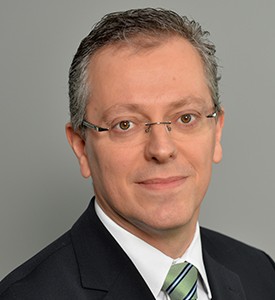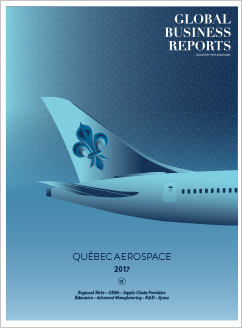
Mannarino develops flight-critical level-A software.
RELATED PUBLICATION
ARTICLES FROM THIS PUBLICATION
- Interfacing with Industry: Québec’s Universities Fortify Aerospace Activity
- Driving Efficiency to Increase Competitiveness: Québec’s Service and Equipment Providers
- The Big Four and the Competitiveness of Québec’s Aerospace Supply Chain
- Banding Together: Québec’s Innovation Ecosystem
- Aerospace in Québec: The Case for an Industrial Policy
- A New Order: Québec’s Supply Chain Reaches Turning Point
- Québec’s Aerospace 4.0: A Solution to Cost Pressures?
- Quebéc Aerospace: Education
- Safety First
John Mannarino & Jim Palmer
MANNARINO SYSTEMS & SOFTWARE INC.
Could you briefly introduce the company and how it has developed over the years?
JM: I started Mannarino in 1999 as a one-person consulting company in the gas turbine controls field. Following growth in reputation, demand for software also grew and the company’s workforce increased to about 30 engineers working for solely Chandler Evans. This single-customer relationship continued for seven to eight years until the point came that we either had to grow or be bought out, so we diversified. We began to service more and more customers; today we service 25. Growing our system engineering capabilities and delving more into software engineering led us into design assurance for software, which in turn led to developing programmable hardware devices. This last development allowed us to work on gas turbine controls and avionics. Once we became very comfortable with software, many more opportunities opened up in different areas. Lockheed Martin’s recent investment, the largest ever made by Lockheed Martin into a Canadian SME, allows us to develop our own proprietary airborne software products.
What are some of the most significant recent developments in the market?
JM: There are now more service providers and competitors as it is easier for startups and overseas companies to penetrate the North American market. We have seen more cost pressure from South American and Asian companies, which did not exist before. However, while globalization and lower-cost offshore rates are in demand, the complexity and cost of running OEMs are quite high. We are trying to take advantage of this and offer our expertise in combination with the advantages of higher efficiency and leaner services offered by an SME to win bigger contracts. Our broad experience across many products and customers is recognized by our clients and the national certification authority as well. We are aiming to offer complete turn-key packages, where we can develop complete embedded software packages for our customers, including the certification. This really reduces the risk in product development and certification.
JP: One of our key differentiators is that we can provide benchmarking for our customers’ processes and significantly improve efficiency. Many major OEMs approach us to aid them with streamlining their processes. We are the only service-based organization in Canada that is authorized as a Design Approval Organization (DAO) for airborne software and airborne electronic hardware. This means we can approve those products on Transport Canada’s behalf whether they are developed by us or by another party.
When it comes to product development, are there any areas of focus for Mannarino?
JM: As we are now developing our own products, we have been reaching out to universities to tap their expertise in particular domains in software engineering. We have been working with the local universities for almost 14 years; they are a great source of talent. Concordia, McGill and others have fantastic co-op and internship programs and almost all the universities now have specific aerospace engineering programs.
JP: We have also submitted various proposals to the government involving Mannarino, other companies and university partners for focused research. We are focusing on one particular product in development which has many aspects.
What are some of the advantages that Mannarino offers its customers and the results they can expect?
JM: Mannarino has a reputation in developing flight-critical level-A software. Because safety is key in aerospace, we hold ourselves to the highest standards in quality. We are extremely quick and our talent is at least equivalent to, and in most instances surpasses, the engineering staff at any of our customers’ businesses. In combination with a lean operating model and minimal levels of bureaucracy, this produces a highly efficient entity, resulting in reduced timelines and cost savings for our customers. Mannarino’s DAO accreditation from Transport Canada is indicative of both the discipline and rigor in process design at the company. Everyone wants cheaper, better and faster; getting a handle on program costs and execution is by far the biggest challenge. In addition, the new revision of the aerospace guidelines for developing software, DO-178C, is currently causing some heartache.
What are the key objectives for Mannarino over the next few years?
JM: There is currently more demand on the services side and we want to reach beyond the North American market once we have strengthened our national base. The recent accreditations will go a long way in helping us grow our services, but we will additionally become a software product company. We will sell globally and therefore quickly attain international customers. In fact, we already have customers lined up for our first R&D product. There is also potential to grow this product in different markets beyond the aerospace industry.












